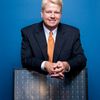
Going green is all the rage these days--we see it practically everywhere. I recently received a flyer in the mail offering me a lawn service that uses "100% renewable energy" to mow my lawn. I was skeptical of the claim, but upon further inspection, it seems true -- the company's lawn mowers run on solar power. Not only is this a boost to the environment and a cost-saving solution, it's also great marketing.
This type of mainstreaming of solar, wind and other clean renewable sources is extremely exciting to those of us who market clean energy and energy efficiency for a living. Yet, at the same time, we haven't reached a tipping point where clean and renewable energy is the mainstream.
Al Gore recently called for the U.S. to move to 100% renewable energy sources within the next ten years -- a huge (and some would say unrealistic) challenge. Perhaps his call to action can help us to reach the tipping point for clean energy.
Indeed, in poll after poll after poll the American people say they want to buy clean energy. They even go so far as to say they will pay more money for it. In some polls, as much as 84% of the American population says they want to buy clean energy.
Isn't that exciting? Doesn't this mean that the American people are more than willing and able to embrace Al Gore's challenge? Doesn't this prove that we have reached the proverbial tipping point? Hardly. We're going to need a lot more lawn services to come on board before we can start to brag about any kind of market success with clean energy.
Today, while we all profess to want to buy clean energy -- less than 3% of Americans actually do. We have two wars, we have $4.00 a gallon gasoline and we have a deep understanding that global climate change is real, yet less than 3% of the American people are buying clean energy. What is it going to take?
Like every major societal change, it's going to demand some serious marketing. Marketing, you say? How capitalistic of you. Let's not kid ourselves -- products have to be marketed in order to become accepted, and clean energy is no different.
Remember war bonds, Smokey the Bear and the Crying Indian? All of these were successful marketing efforts that helped change society. In order to market successfully, you need to first understand the mindset of the people you are addressing. In the case of clean energy, we need to understand why it is that 84% say they'll buy clean energy but less than 3% do.
Here at SmartPower, I think we've uncovered a lot of the reasons why people say they'll buy clean energy and then never do. Chief among these reasons is a belief among the American people that clean energy simply doesn't work. Everyone knows clean and renewable energy is good for the environment, good for public health and good for national security, but beyond that, most folks simply don't think the stuff works. So when the pollsters call, what people are really saying is: "I'd buy clean energy...if I thought it worked."
So, issue one: We need to convince the public that clean energy works.
This is a bigger challenge than simply having Al Gore announce a target of 100% in ten years. Targets and goals and challenges are all well and good. However, in order to actually achieve these goals, we need to first convince the American people that clean energy is real, it's here and it's working. We need them to know that when they use power from the sun, wind and other clean, renewable sources, nothing changes: the lights still go on, the air conditioning still works and the refrigerator won't turn off. In short, we need to convince the American consumer that clean energy is as strong, reliable and available as coal, oil or nuclear power.
We have to get the message out that major U.S. retailers like Wal-Mart are installing solar panels on their buildings. Even Intel, the world's largest manufacturer of computer chips trusts renewable energy to run its factories. No one is going to argue that hugely successful companies are using clean energy to be activists.
We know that if they are using clean energy it's because it is good for their respective businesses.
When we successfully convey this message, consumers will live up to what the polls show. They will buy clean energy for their homes and businesses because what they are really looking for is power that is first strong and reliable, but is also good for the environment, public health and national security.
And there's nothing inconvenient about that truth.
PS: Beginning this week, in this blog we are going to focus on how all of us can be a part of the climate change solution. We'll be explaining some of SmartPower's best marketing practices in clean energy and energy efficiency -- what we call being "Energy Smart." Through our Energy Smart Campaign, we explain how each of us can take simple yet significant steps to help conserve energy and save money. We believe strongly that if we can get someone to take a small step towards being Energy Smart today, we can encourage him or her to take larger steps tomorrow. In the process we'll explain how these actions are not only saving money, but also creating clean air, a healthy community and true energy independence. So check back here often - and let's get Energy Smart together!
